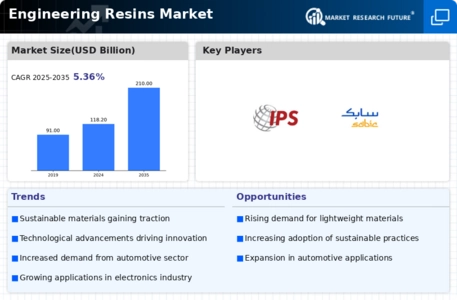-
EXECUTIVE SUMMARY
-
MARKET INTRODUCTION
-
Scope of the Study
- Research Objective
- Limitations
-
RESEARCH METHODOLOGY
-
Data Mining
-
Secondary Research
- Primary Interviews and Information Gathering Process
-
Forecasting Model
- Bottom-Up Approach
- Top-Down
-
Data Triangulation
-
Validation
-
Overview
-
Drivers
-
Restraints
-
MARKET FACTOR ANALYSIS
-
Value Chain Analysis
- Bargaining Power of Suppliers
- Threat of New Entrants
- Intensity of Rivalry
-
COVID-19
- Market Impact Analysis
- Regional
- Opportunity and Threat Analysis
-
GLOBAL ENGINEERING
-
Overview
-
Polycarbonate
-
Acetal Homopolymer Polyoxymethylene
-
Nylon
-
Polyethylene
-
Polypropylene
-
Teflon
-
GLOBAL ENGINEERING RESINS
-
Overview
-
Bumpers
-
Electrical Insulators
-
Inhalers
-
GLOBAL ENGINEERING RESINS MARKET, BY END-USE INDUSTRY
-
Automotive
-
Building and Construction
-
Healthcare
-
Packaging
-
GLOBAL ENGINEERING RESINS MARKET, BY REGION
-
Overview
- US
- Canada
-
Europe
- France
- UK
- Italy
- Rest of Europe
-
Asia-Pacific
- India
- Japan
- South Korea
- Rest of Asia-Pacific
-
Rest of the World
- Africa
- Latin America
-
Overview
-
Competitive Analysis
-
Major Growth Strategy in the Global Engineering
-
Competitive Benchmarking
-
Leading
- New Product Launch/Service
- Merger & Acquisitions
- Joint Ventures
- Sales & Operating Income, 2022
-
COMPANY PROFILES
-
Company Overview
- Financial Overview
- Key Developments
- SWOT Analysis
-
BASF SE
- Company Overview
- Products Offered
- Key Developments
- Key Strategies
-
E.I. Dupont de Numeours
- Company Overview
- Financial Overview
- Key Developments
- SWOT Analysis
-
Honeywell International Inc.
- Company
- Financial Overview
- Products Offered
- SWOT Analysis
- Key Strategies
- Company Overview
- Financial
- Products Offered
- Key Developments
- Key Strategies
-
LG CHEMICALS
- Financial Overview
- Products
- Key Developments
- SWOT Analysis
-
Mitsubishi Chemical Corporation.
- Financial Overview
- Products
- Key Developments
- SWOT Analysis
-
SABIC
- Company Overview
- Products Offered
- Key Developments
- Key Strategies
-
Solvay SA
- Financial Overview
- Products
- Key Developments
- SWOT Analysis
-
Sumitomo Chemical Co. Ltd..
- Company
- Financial Overview
- Products Offered
- SWOT Analysis
- Key Strategies
-
References
-
Related Reports
-
GLOBAL ENGINEERING RESINS MARKET, ESTIMATES & FORECAST, 2025-2034 (USD BILLION)
-
GLOBAL ENGINEERING RESINS MARKET, BY TYPE, 2025-2034 (USD BILLION)
-
GLOBAL ENGINEERING RESINS MARKET, BY APPLICATION, 2025-2034 (USD BILLION)
-
GLOBAL ENGINEERING RESINS MARKET, BY END-USE INDUSTRY, 2025-2034 (USD BILLION)
-
NORTH AMERICA: ENGINEERING RESINS MARKET, BY TYPE, 2025-2034 (USD BILLION)
-
NORTH AMERICA: ENGINEERING RESINS MARKET, BY APPLICATION, 2025-2034 (USD BILLION)
-
NORTH AMERICA: ENGINEERING RESINS MARKET, BY END-USE INDUSTRY, 2025-2034 (USD
-
EUROPE: ENGINEERING RESINS MARKET, BY END-USE INDUSTRY, 2025-2034 (USD BILLION)
-
GERMANY: ENGINEERING RESINS MARKET, BY TYPE, 2025-2034 (USD BILLION)
-
GERMANY: ENGINEERING RESINS MARKET, BY APPLICATION, 2025-2034 (USD BILLION)
-
GERMANY: ENGINEERING RESINS MARKET, BY END-USE INDUSTRY, 2025-2034 (USD BILLION)
-
FRANCE: ENGINEERING RESINS MARKET, BY TYPE, 2025-2034 (USD BILLION)
-
FRANCE: ENGINEERING RESINS MARKET, BY APPLICATION, 2025-2034 (USD BILLION)
-
FRANCE: ENGINEERING RESINS MARKET, BY END-USE INDUSTRY, 2025-2034 (USD BILLION)
-
ITALY: ENGINEERING RESINS MARKET, BY TYPE, 2025-2034 (USD BILLION)
-
ITALY: ENGINEERING RESINS MARKET, BY APPLICATION, 2025-2034 (USD BILLION)
-
ITALY: ENGINEERING RESINS MARKET, BY END-USE INDUSTRY, 2025-2034 (USD BILLION)
-
SPAIN: ENGINEERING RESINS MARKET, BY TYPE, 2025-2034 (USD BILLION)
-
SPAIN: ENGINEERING RESINS MARKET, BY APPLICATION, 2025-2034 (USD BILLION)
-
SPAIN: ENGINEERING RESINS MARKET, BY END-USE INDUSTRY, 2025-2034 (USD BILLION)
-
UK: ENGINEERING RESINS MARKET, BY TYPE, 2025-2034 (USD BILLION)
-
UK: ENGINEERING RESINS MARKET, BY APPLICATION, 2025-2034 (USD BILLION)
-
UK: ENGINEERING RESINS MARKET, BY END-USE INDUSTRY, 2025-2034 (USD BILLION)
-
REST OF EUROPE: ENGINEERING RESINS MARKET, BY TYPE, 2025-2034 (USD BILLION)
-
REST OF EUROPE: ENGINEERING RESINS MARKET, BY APPLICATION, 2025-2034 (USD BILLION)
-
REST OF EUROPE: ENGINEERING RESINS MARKET, BY END-USE INDUSTRY, 2025-2034 (USD
-
CHINA: ENGINEERING RESINS MARKET, BY TYPE, 2025-2034 (USD BILLION)
-
CHINA: ENGINEERING RESINS MARKET, BY APPLICATION, 2025-2034 (USD BILLION)
-
CHINA: ENGINEERING RESINS MARKET, BY END-USE INDUSTRY, 2025-2034 (USD BILLION)
-
INDIA: ENGINEERING RESINS MARKET, BY TYPE, 2025-2034 (USD BILLION)
-
INDIA: ENGINEERING RESINS MARKET, BY APPLICATION, 2025-2034 (USD BILLION)
-
INDIA: ENGINEERING RESINS MARKET, BY END-USE INDUSTRY, 2025-2034 (USD BILLION)
-
AUSTRALIA: ENGINEERING RESINS MARKET, BY TYPE, 2025-2034 (USD BILLION)
-
AUSTRALIA: ENGINEERING RESINS MARKET, BY APPLICATION, 2025-2034 (USD BILLION)
-
AUSTRALIA: ENGINEERING RESINS MARKET, BY END-USE INDUSTRY, 2025-2034 (USD BILLION)
-
SOUTH KOREA: ENGINEERING RESINS MARKET, BY TYPE, 2025-2034 (USD BILLION)
-
SOUTH KOREA: ENGINEERING RESINS MARKET, BY APPLICATION, 2025-2034 (USD BILLION)
-
SOUTH KOREA: ENGINEERING RESINS MARKET, BY END-USE INDUSTRY, 2025-2034 (USD BILLION)
-
REST OF ASIA-PACIFIC: ENGINEERING RESINS MARKET, BY TYPE, 2025-2034 (USD BILLION)
-
REST OF ASIA-PACIFIC: ENGINEERING RESINS MARKET, BY APPLICATION, 2025-2034 (USD
-
REST OF THE WORLD: ENGINEERING RESINS MARKET, BY END-USE INDUSTRY, 2025-2034
-
AFRICA: ENGINEERING RESINS MARKET, BY END-USE INDUSTRY, 2025-2034 (USD BILLION)
-
LATIN AMERICA: ENGINEERING RESINS MARKET, BY TYPE, 2025-2034 (USD BILLION)
-
LATIN AMERICA: ENGINEERING RESINS MARKET, BY APPLICATION, 2025-2034 (USD BILLION)
-
LATIN AMERICA: ENGINEERING RESINS MARKET, BY END-USE INDUSTRY, 2025-2034 (USD
-
MARKET STRUCTURE FOR THE GLOBAL ENGINEERING RESINS MARKET
-
BASF SE: SWOT ANALYSIS
-
INNOVATIVE PLASTICS: FINANCIAL OVERVIEW SNAPSHOT
-
LG CHEMICALS: SWOT ANALYSIS
-
SABIC: SWOT ANALYSIS
-
SOLVAY SA.: SWOT ANALYSIS


 Source: Secondary Research, Primary Research, Market Research Future Database and Analyst Review
Source: Secondary Research, Primary Research, Market Research Future Database and Analyst Review


Leave a Comment